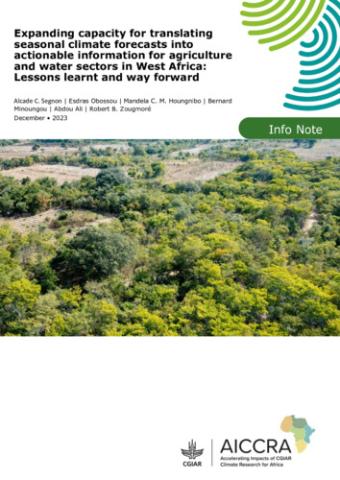Abstract
AGRHYMET has recently proposed a novel approach for translating seasonal climate forecasts into actionable information for adaptation planning for agriculture and water sectors using sectoral biophysical and process-based models. The aim is to finetune and generate forecast-based recommendations for these two sectors to better support effective adaptation planning and reduce risks associated with biases and subjective recommendations. This Info Note documents lessons learnt from the regional capacity building on this novel approach and related tools and methods for translating seasonal forecasts into actionable information for agriculture and water sectors in West Africa. Twenty-four participants, including four women from NMHSs of 14 countries including 11 non-AICCRA countries across West Africa and the Sahel were capacitated on this new approach. Over 50% of the participants are now capable to translate seasonal forecasts into sectorial recommendations using crop models such as SARRAO and hydrological models such HYPE. Notably, the training has empowered women and young experts to contribute to the national climate knowledge base. Most participants (58%) planned to translate future seasonal climate forecasts into sector-specific information using biophysical and process-based models such as SARRAO and HYPE. The lack of or limited knowledge of the programming language required to operate such models could, however, limit the effective seasonal forecasts translation. Some participants (46%) intend to continue learning, including programming language, to effectively translate seasonal forecasts into sector-specific information. Furthermore, 54% of the beneficiaries planned to share their knowledge with colleagues and staff at the institutional level through follow-up activities such as capacity building, seminars, workshops, etc, which will also contribute strengthening their skills. Continuous monitoring of participants to track behavioural changes and further capacity development are needed to ensure effective and widespread use of the approach across West Africa and the Sahel.

